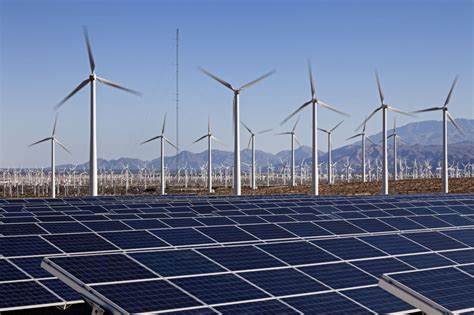In the ever-evolving landscape of renewable energy, China emerges as a pivotal player, wielding substantial influence over global clean energy deployment. According to a latest report from the International Energy Agency (IEA), 2023 marked a significant milestone, witnessing a remarkable surge in clean energy installations worldwide. Solar PV and wind energy installations surged by 85% and 60%, respectively, with nearly 540 GW of capacity additions globally. Notably, China spearheaded the majority of these advancements, underscoring its dominance in the renewable sector.
However, while clean energy deployment soared, it remained heavily concentrated in advanced economies and China, leaving other regions behind. In 2023, these two regions accounted for a staggering 90% of capacity additions in wind and solar PV, as well as over 95% of global electric car sales. This underscores China’s central role in driving the transition towards sustainable energy solutions.
Electric car sales surged by 35% in 2023, reaching a landmark 14 million vehicles globally, constituting one in every five car sales. China, once again, led the charge with electric vehicles comprising one in three sales, closely followed by the European Union at one in four.
On a different front, heat pump sales experienced a marginal decline from their peak in 2022, attributed to consumer cautiousness amidst economic uncertainties and fluctuating gas prices. This downturn emphasises the critical need for supportive policies to alleviate financial burdens on consumers and bridge the gap between electricity and gas prices.
Nuclear capacity additions saw a slight dip to 5.5 GW in 2023, with the long-term nature of nuclear projects tempering year-on-year fluctuations. Nevertheless, construction commenced on five new nuclear reactors in 2023, contributing to the 58 reactors currently underway globally, with a combined capacity exceeding 60 GW.
In the realm of hydrogen electrolysis, capacity additions skyrocketed by 360% in 2023, primarily driven by China’s assertive stance, displacing the European Union from its former leading position. Although the United States showed increased deployment speed, absolute additions remained modest.
However, amidst these strides in clean energy, energy efficiency trails behind. Despite a 1% improvement in energy intensity in 2023, it falls significantly short of the COP28 pledge to double the long-term rate of improvement by 2030, as per the IEA report of March 2024.
The report further stated that the post-COVID-19 era witnessed a surge in clean energy deployment, outpacing fossil fuel growth by a two-to-one ratio from 2019 to 2023. Notably, five key clean energy technologies—solar PV, wind power, nuclear power, electric cars, and heat pumps—contributed significantly, averting annual fossil fuel demand equivalent to 25 EJ, equivalent to the combined energy demand of Japan and Korea in 2023.
Moreover, deploying these technologies resulted in a substantial reduction in emissions, with solar PV alone averting 1.1 Gt of emissions annually, equivalent to Japan’s entire energy sector emissions.
In conclusion, China’s proactive stance in clean energy deployment reverberates globally, reshaping energy markets and accelerating the transition towards sustainability. As the world grapples with environmental challenges, China’s leadership in renewable energy remains paramount for achieving a greener future.

